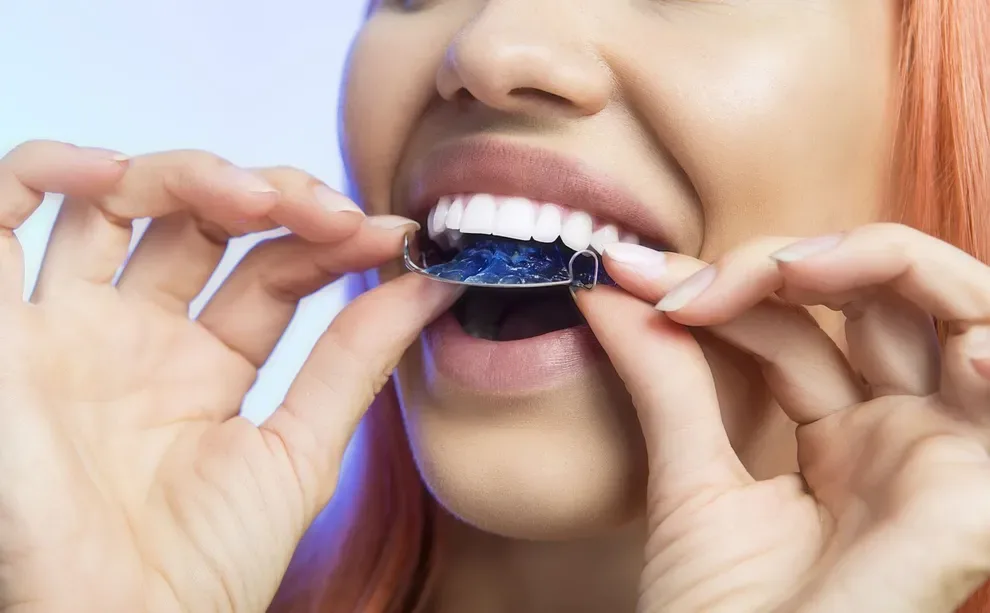Can You Wear an Old Retainer to Straighten Teeth?

Table of Contents
- Retainers Process
- Can You Wear an Old Retainer?
- Dangers
- Do Retainers Help?
- Why Your Teeth Move After Treatment
If your teeth have shifted after orthodontic treatment or you’re afraid they’re beginning to, it may be tempting to try to straighten them with an old retainer. It’s not always a good idea.
If your retainer no longer fits on your teeth, forcing it into your mouth could lead to serious damage, including the need for another round of orthodontic care. Retainers just aren’t designed to move teeth into completely new positions. Wearing an old retainer to shift teeth back is rarely effective.
Similarly, if your retainer is broken or damaged, it can’t do a good job of keeping your teeth in place. Wearing it won’t help your smile, and it could cause problems like tooth damage, gum lacerations, and infections.
Never assume a retainer you’ve neglected for weeks is safe to use. Inspect it carefully (more on this in a minute), and ensure you can place it in your mouth comfortably. Treat your retainers and your smile carefully to protect your investment.
How Do Retainers Work?
Retainers are made at the end of treatment with retainers or braces. At this point, your teeth no longer need to move. Retainers are designed to keep them in place.
Whether you wear braces or clear aligners, the process of moving teeth is similar. It involves the following:
Pressure: The visible portion of your teeth is pushed by braces or aligner plastic.
Remodeling: Bone that supports the teeth wears away and rebuilds based on that pressure.
Stretching: Ligaments and soft tissues that support your teeth are lengthened and rebuilt in response to the movement.
Treatment ends when your team determines that your teeth have taken up positions that allow for easy cleaning, speaking, chewing, and comfort. At that point, you’re no longer required to wear braces or aligners, and your retainers are made.
Wearing retainers is critical. When pressure from braces or aligners is removed, your teeth can be tempted to respond to the pull of ligaments. That means moving back to their old spots. The process is gradual, and you may not see a change when you look in the mirror. But every day, teeth move back to the spots they once held.
A retainer can counteract this process. Wearing your retainer means allowing the ligaments supporting your teeth to strengthen in their new positions.
In most cases, dental experts tell their customers to wear their retainers every day in the months following dental treatment. Then, people are asked to wear their retainers at night for the rest of their lives.
Retainers aren't cheap, and most cost between $200 and $500 per set. Lose them during treatment, and you must pay to get new versions made. And if you commit to wearing them for the rest of your life, you'll probably need at least one replacement set.
For people with mild dental problems stemming from poor retainer compliance, putting in the old device could be the perfect solution. However, if your teeth have shifted position dramatically, you may need more help than your old retainer can provide.
Can You Wear an Old Retainer?
If your retainer is not damaged and still fits into your mouth, even if it is a little tight, you can often still wear it. This means that your teeth have not moved so much that the retainer is no longer effective.
The retainer will likely be tight for a few days after putting it back in, but your teeth will shift slightly to accommodate this.
When your teeth have moved too much for your retainer to easily fit back in, you have experienced an injury or trauma to the teeth, or your retainer is damaged, you should not attempt to wear the old retainer.
Additionally, if it has been more than 10 years or so since you tried to wear your retainer, the odds are that it is either damaged or your teeth have shifted too much for it to work. If you have to force it back over your teeth, do not wear it.
Dangers of Wearing an Old Retainer
An old retainer can often do more harm than good, especially if it has been years since you have tried to use it. The following are risks of using an old retainer:
Damage to teeth: Forcing a retainer into place when your teeth have shifted can chip, crack, or break your teeth.
Gum tissue damage: Pushing a retainer onto your teeth when it does not fit properly can create pressure on your gum tissue. When you try to remove the retainer, it can even rip some gum tissue off, causing bleeding and sensitivity.
Stuck retainer: Forcing a retainer onto your teeth when it no longer fits could cause it to become stuck, requiring a dental appointment to have it removed.
Sickness: Retainers that have been sitting for a long period of time could collect bacteria that you are then putting back into your mouth with the old retainer.
Pain: Putting an old retainer back on when your teeth have moved can be painful and hurt your teeth and gums.
Broken retainer: Plastic retainers will become brittle over time and can snap in your mouth, cutting it or causing pain.
Generally, if you have not worn your retainer for several months or years, you will need to speak to your orthodontist about getting a new one or restarting a treatment plan. Before trying to use an old retainer, it can be a good idea to check with your orthodontist to make sure it will be safe to do so. They may be able to adjust your retainer to fit again. Remember that if you need a new retainer, it will not actually move your teeth back into alignment. Instead, it will just hold your teeth where they are now. Retainers are designed to keep teeth from shifting. They are not intended to actually move teeth.
Evaluating the Fit & Condition of Your Old Retainer
Before you assume it’s safe to pick up where you left off with an old retainer, inspect the device and your smile. The precautions you take now could save you pain and heartache later.
Here’s how to assess your device:
Use your eyes. Look at your retainer closely. Are there any cracks? If you have a Hawley retainer, is the wire still connected to the plastic? Does the device look clear and clean?
Use your fingers. Rub your fingers along the entire surface of your retainer. Do you feel any sharp bits that could cut your mouth?
Use your nose. Sniff the device very carefully. Does it smell dirty or contaminated?
If your device is broken or seems deeply contaminated, stop here and contact your dental professional. You’ll need a new retainer.
If your device passes your inspection, clean it carefully with cool water, clear soap, and a soft-bristled toothbrush. You can’t remove bacteria and infectious agents this way. A deeply infected retainer should be replaced. But a scrub could help you remove accumulated dust.
Once your retainer is clean, gently place it in your mouth. If it fits perfectly or feels a bit snug, that’s acceptable. If you have to push to make it fit, or you can’t get it in your mouth at all, contact your dental professional. You need a new device.
Why Your Teeth Move After Treatment
Most dental experts tell their customers how to use retainers. Wear your retainers properly, and your teeth should be secured in their new positions with healthy bone and springy ligaments. But plenty of forces could push your teeth out of place.
Your teeth could move due to the following issues:
Dental Decay
If a neighboring tooth is compromised by cavities and removed, teeth can move to fill in the gap. Your retainers can’t counteract this process. If you’ve lost a tooth, you’ll need a new set.
Injuries
A blow to the face could move teeth forward or back. Sometimes, teeth are pushed out altogether. While you heal from these injuries, you can’t wear your retainer. When you have healed, you’ll likely need a new set.
Your retainer is a snapshot of your oral health at one point in time. If your teeth have moved because of an accident or injury that happened after your treatment, you probably need a new assessment and treatment plan.
Poor Retainer Use
Skipping your retainer could also prompt your teeth to move, and about 4% of orthodontic customers never wear the devices they're given. Similarly, if you wore your retainer faithfully immediately after treatment but stopped wearing it as the months and years wore on, your teeth can move in ways you didn't predict. It’s critical to wear your retainers exactly as instructed.
Grinding Your Teeth
Pushing your jaws together, whether you’re awake or asleep, can subject your teeth to intense force that can lead to cracking or enamel loss. Grinding your teeth can also crack and warp some types of retainers.
If you grind your teeth, talk to your dental professional about your retainers. Switching to a different product (like a permanent retainer) could be smart, as it could allow you to wear a night guard to protect your teeth too. Your doctor may also recommend stress-relieving steps, such as meditation, to ensure you don’t put intense pressure on your teeth.
Can Your Retainer Help?
Experts say the best way to keep your teeth straight for a lifetime is to continue to wear your retainer. But if you haven't worn the device for a while, it may not help you regain the smile you've been looking for.
With a small investment of time and money, you can fix your bite and smile. And you'll be guided by a dental professional rather than doing the work yourself and putting your health at risk.
